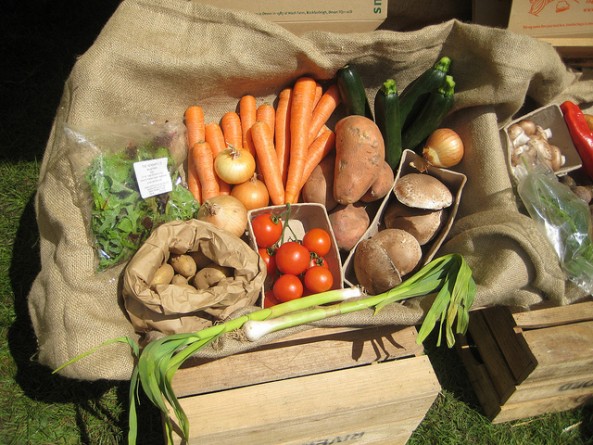This year’s World Environment Day on 5 June focuses on the environmental impact of the food choices you make. Making informed decisions about what you choose to eat is an important step in improving the already-damaged environment. With that said, do you know what your foodprint says about you? Do you even know what that is?
What is a foodprint?
Well, just like the carbon footprint you produce every year through the release of greenhouse gases like carbon dioxide, you also produce a foodprint through the hidden emissions of the foods you choose to eat. Unlike a car, one cannot see the release of greenhouse gases from a steak or burger patty, but that does not mean it has not been released. Some foods release more carbon dioxide than others. The hidden trail of a meal’s entire trip from farm to plate is filled with carbon-emitting processes.

Eating foods such as burgers increase the carbon foodprint. Image from Getaway library
This is how it works. A cow is grazing in a field (if the cow is that lucky) burping, farting and polluting the atmosphere. When deemed ripe and ready, the cow is taken to the abattoir where it gets slaughtered and the meat gets cut and packaged. The meat gets loaded onto big trucks and taken to distribution centers which in turn distribute the meat to retail markets. By the time you get your hands on a thick, juicy beef burger at your favourite fast food joint, a huge amount of carbon dioxide has already been released.
Sounds like you? If it does, you are guilty of giving the environment a slap in the face. OK, so most us are guilty of slapping. That’s about five billion slaps every day. How do we stop the slapping?
- Eat fewer animals and more plants. The demand for livestock will decrease which means there will be less burping and farting by cows and sheep, and less emissions from transportation.
- If you fancy yourself an innovative individual, why not start your own garden. This will eliminate several of the major carbon contributors.
- Buy funny fruit at your local market that would otherwise be thrown out because of their funny shapes or sizes.
- Leftovers are lekker lifesavers for that light lunch. Food waste is an enormous drain on natural resources so use your leftovers.
- Eat smaller portions, this is not only good for your pocket but also good for your waistline.
- Donate, don’t carbonate. If you are thinking about throwing food away, STOP! Throwing food away means that all the resources used in the production of the food will be lost.

Organic vegetables. Image by Andy Roberts
Short of returning to the time when hunting and gathering were the only two professions, the simplest action you can take to reduce your foodprint is to eat less emission intensive foods. So Think before you Eat and help Save our environment.
Main image from Green Eatz
For more blogs and information on conservation and the environment visit the conservation and environment page on the Getaway Blog and for more info on World Environment Day visit www.unep.org
















